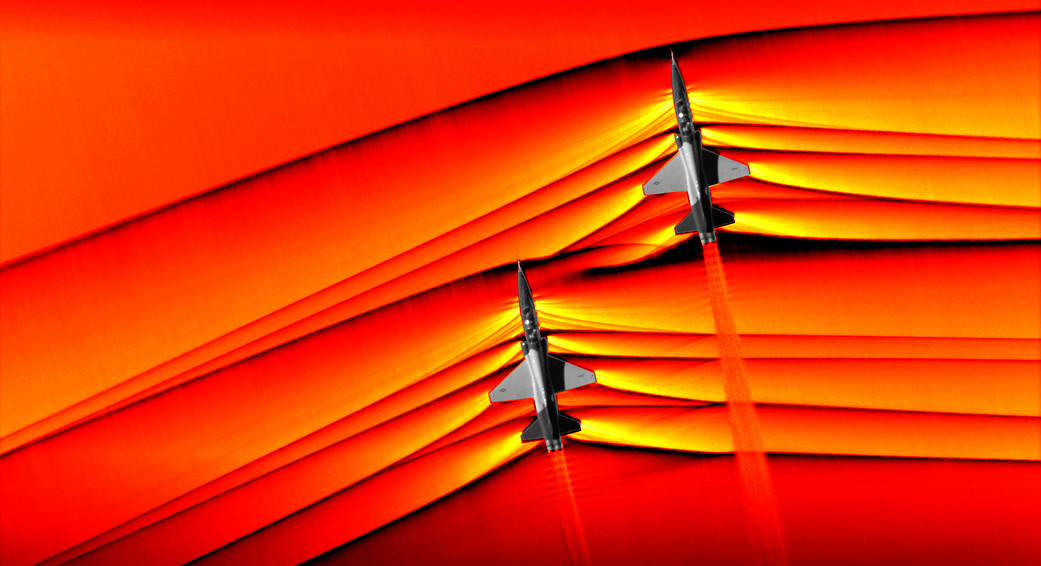
Airborne Background Oriented Schlieren Imaging (AirBOS) is a method used to visualize the shockwaves (if going fast enough) and vortices coming from a full-scale airplane in flight. The method works by flying a slow-moving observer airplane equipped with high-speed digital cameras, looking down at a landscape that has “visual texture”. The cameras record this landscape while awaiting the passing of the supersonic aircraft though the cameras’ fields-of –view. In the case of a supersonic aircraft, the shockwaves form and are highly compressed air disturbances around the vehicle. The air is so compressed that is creates a refractive index change, which can bend the path of a ray of light. This bending, or distortion, will change the camera’s view of the pattern it recorded before the plane entered. The BOS technique then employs an image processing program that calculated the amount of distortion caused by the shockwaves. This calculation is rendered as a contour plot of the magnitude of the distortion in the vertical or horizontal direction. Then the image of the airplane is pasted into the contour plot to orient the viewer’s understanding of the flow features.




























